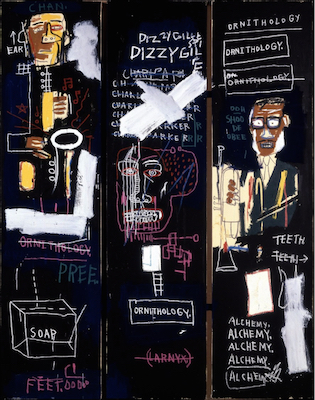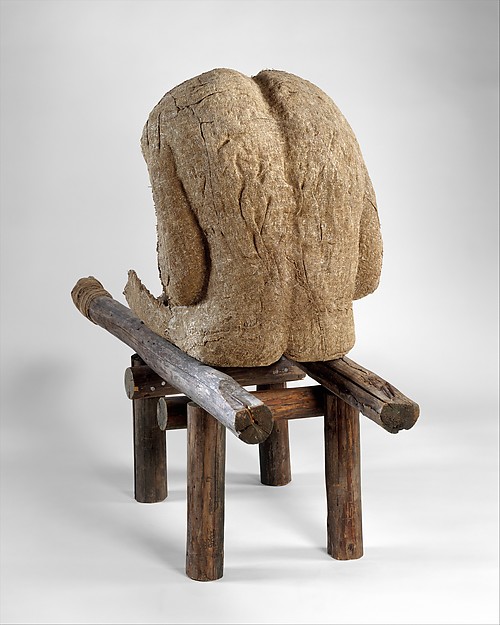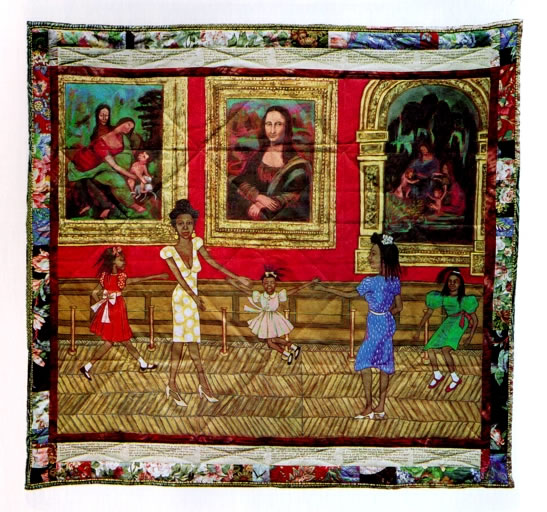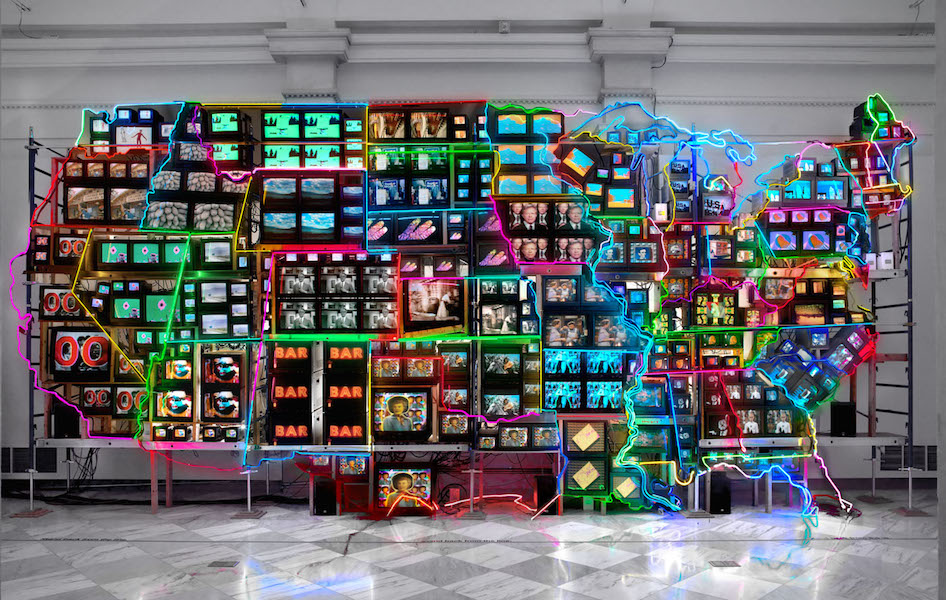10.1 Materials, Processes, and Techniques in Global Contemporary Art
4 min read•june 18, 2024
Sylvia Rodriguez
AP Art History 🖼
34 resourcesHorn Players:

Jean-Michel Basquiat, Horn Players, 1983, acrylic and oilstick on three canvas panels mounted on wood supports, 243.8 x 190.5 cm (The Broad Art Foundation) © The Estate of Jean-Michel Basquiat (zoomable image here)
- "Horn Players" is a mixed media painting created by Jean-Michel Basquiat in 1982.
- The painting features two black figures playing horns, with bold lines and colorful brushstrokes.
- The figures are set against a chaotic and layered background of text, images, and symbols.
- The use of black figures and the frenzied mark-making are hallmarks of Basquiat's style, which reflects the political and social issues of the time, including racism, poverty, and the marginalization of African Americans.
- "Horn Players" is considered a powerful example of Basquiat's work, reflecting his use of personal and cultural references to comment on contemporary society.
- The painting is part of Basquiat's significant body of work, which has had a lasting impact on the art world and continues to influence artists today.
Androgyne III:

Magdalena Abakanowicz, Androgyne III, 1985, burlap, resin, wood, nails, and string, 121.9 x 161.3 x 55.9 cm (The Metropolitan Museum of Art)
- Created in the late 20th century, likely in the 1980s
- Made of burlap, resin, wood, nails, and string.
- Androgyne III is part of a larger series of sculptures by the same name, which all feature similar abstract, humanoid figures
- The series is considered one of the most important and recognizable works by the artist
- Androgyne III is an example of Abakanowicz's focus on the human form, which was a departure from the abstract expressionism that dominated the art world in the post-World War II era
- The sculpture's abstract form and lack of specific features speaks to Abakanowicz's interest in the universality of the human experience
- Androgyne III is an example of the artist's use of organic and organic-inspired forms in her work, which was influenced by her early education in agriculture and her experiences during World War II.
Dancing at the Louvre:

Faith Ringgold, Dancing at the Louvre, 1991, acrylic on canvas, tie-dyed, pieced fabric border, 73.5 x 80 inches, from the series, The French Collection, part 1; #1 (private collection)
- "Dancing at the Louvre" is a quilt created by American artist Faith Ringgold in 1988.
- The quilt features a scene of people dancing in front of the Louvre Museum in Paris, France.
- The piece is made from fabric and is part of Ringgold's series of story quilts that explore social and political issues.
- The quilt combines the traditional medium of quilting with references to modern art and pop culture.
- "Dancing at the Louvre" is significant in the art world for its commentary on cultural appropriation and the representation of African Americans in museums and fine art.
- The quilt is also notable for its use of vibrant colors, patterns, and composition, which showcase Ringgold's distinctive style.
Electronic Superhighway:

Nam June Paik, Electronic Superhighway: Continental U.S., Alaska, Hawaii, 1995, fifty-one channel video installation (including one closed-circuit television feed), custom electronics, neon lighting, steel and wood; color, sound, approx. 15 x 40 x 4 feet (Smithsonian American Art Museum) © Nam June Paik Estate
- "Electronic Superhighway" is a work of conceptual art by Nam June Paik
- It was created in 1995
- The work is an installation piece that features multiple monitors and screens
- It is a representation of the artist's vision of a future world dominated by technology and the internet
- The piece highlights the increasing influence of electronic media on society and culture
- The installation is designed to immerse the viewer in a world of rapidly moving images and sounds
- "Electronic Superhighway" reflects Paik's belief in the potential of technology to create a more connected and connected world.
Stadia II:

Julie Mehretu, Stadia II, 2004, ink and acrylic on canvas, 108 x 144 inches (Carnegie Museum of Art, Pittsburgh) © Julie Mehretu
- Stadia II is a large-scale painting created by Ethiopian-American artist Julie Mehretu in 2004
- It is part of Mehretu's Stadia series, which explores the concept of stadia, or sports arenas, as symbols of power and control
- Stadia II measures approximately 10 feet by 20 feet and is made with acrylic, pencil, and ink on canvas
- The composition features overlapping layers of abstract forms, symbols, and marks that suggest a chaotic, fragmented world
- The forms in Stadia II are meant to evoke a sense of motion and energy, as well as the architecture of stadia and other public spaces
- The color palette is predominantly black, white, and gray, with occasional pops of bright colors, such as red and yellow, that emphasize the dynamic energy of the composition
- Stadia II is a powerful expression of Mehretu's interest in the intersection of politics, history, and the built environment, and it continues to be a significant work in her oeuvre.

Fiveable
Resources
© 2025 Fiveable Inc. All rights reserved.